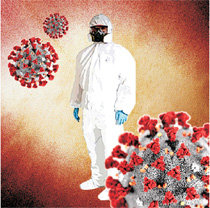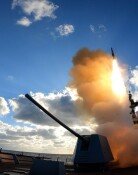COVID-19 infection among medical professionals
COVID-19 infection among medical professionals
Posted February. 24, 2020 08:59,
Updated February. 24, 2020 08:59

Doctor Li Wenliang at Wuhan Central Hospital was a whistle-blower who warned about the novel coronavirus from China, COVID-19, in spite of the Chinese authorities’ information control. He passed away at the age of 34 on February 7 after getting infected on January 9 while treating patients under a lot of stress from the police’s investigation and punishment. “After I recover from the disease, I will work on the front line of the battle. The virus is still spreading, and I don't want to be a deserter,” he said before his death. Although he had not been able to realize his wish, his spirit of sacrifice prioritizing patients at all times touched many people.
In the case of MERS in 2015, infection in hospitals worsened the situation in South Korea. Not only mass infection but also super spreaders originated from hospitals. As a result, nine hospitals across the country were designated for cohort isolation. Infection in hospitals is even more dangerous as there would be chronic and elderly patients with a weak immune system.
Five medical professionals at Cheongdo Daenam Hospital in North Gyeongsang Province were diagnosed with COVID-19 on the weekend. This is the first South Korean hospital whose medical staff members got infected at once and it is shut down at the moment. Eunpyeong St. Mary's Hospital has been also closed down as it was revealed that the hospital’s employee in charge of transporting patients had been transferring 207 patients even after the signs of symptoms first appeared. In addition, Ham Maeum Hospital in Changwon South Gyeongsang Province, in which a doctor and a nurse have been diagnosed, and university hospitals in Daegu where the number of confirmed cases soared have been also shut down. In-hospital infection, which can cause secondary infection among medical staff and inpatients, also makes it difficult for emergency patients to receive timely treatment. This is why this type of infection is referred to as the worst-case scenario for infectious diseases as it renders local medical vacuum unavoidable.
As in-hospital infection rises, the South Korean government has decided to temporarily allow over-the-phone prescription for patients with mild conditions, such as cold. Doctors can directly send prescriptions to pharmacies, from which patients can pick up their medications. However, the medical community is raising opposition as remote medical service without in-person consultation can lead to misdiagnoses. Such a reaction is far from the recent trend in countries, such as China and Japan, where not only remote treatment but also operations are allowed thanks to the development of artificial intelligence technologies. It remains to be seen how the spread of COVID-19 may affect the sentiment in South Korea.
Emergency rooms in the hospitals of Kyungpook National University, Yeungnam University, and Catholic University of Daegu have been all closed down due to the spread of the virus and in-hospital infection in Daegu and North Gyeongsang Province. Amid the fear that medical vacuum may be created, medical professionals’ selfless actions have shined through. In particular, a growing number of doctors and nurses are volunteering to work at Dongsan Hospital and Daegu Medical Center, which have been designated as hub hospitals for COVID-19. Their decisions are not based on earning honor or becoming a hero. They simply believe that health professionals should be where they are needed. Such plain bravery gives us hope that COVID-19 can be overcome.
Young-Sik Kim spear@donga.com







